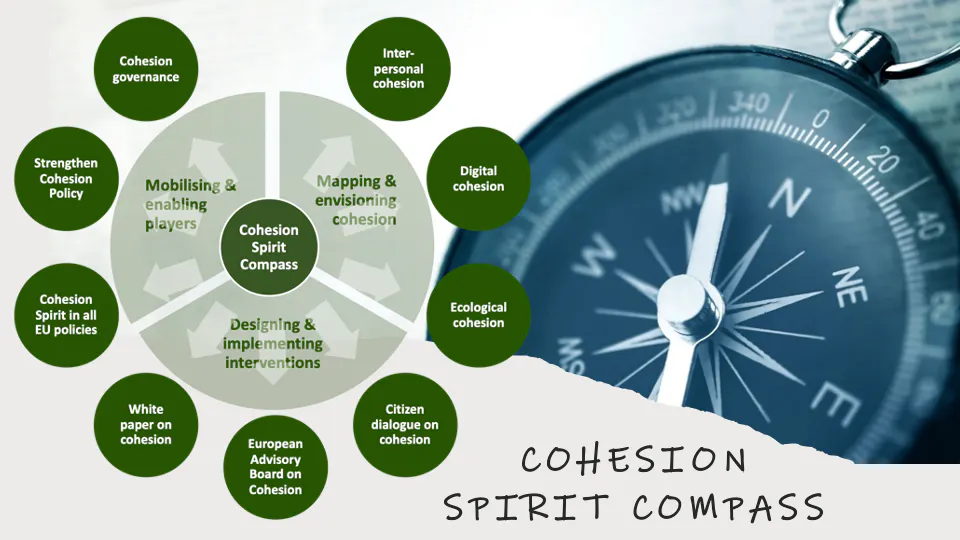Cohesion Spirit Compass
November 2021

Increasing inequalities between places and societal groups challenge the future of Europe. To avoid fragmentation putting an end to European integration, we need to rethink cohesion and act on it. What does the aim of economic, social and territorial cohesion laid down in the Treaty on the European Union (Article 3, TEU) mean in the light of today’s societal challenges?
A new take on cohesion is needed
In a recent study for the European Committee of the Regions (Opens in a new window), we have operationalised this general aim, and identified cohesion principles and dimensions. These help to better understand the ‘Cohesion Spirit’ of European policy making. A review of 15 rather varied EU policies showed that the ‘Cohesion Spirit’ is mostly present in the aims of the policies. However, it fades away when moving to the policies’ specific priorities and implementation.
Putting it bluntly, the aim of cohesion is largely left to Cohesion Policy. At the same it is clear, that cohesion is a very abroad aim which cannot be delivered by a single policy – however large it is. Indeed, given the size of the cohesion challenge, there is no single EU policy which can do so. If cohesion is wanted in Europe, we need to mean it. We need more than Cohesion Policy & lipservice by other EU policies.
Furthermore, limiting the cohesion debate to economic, social and territorial cohesion is no longer timely. In the light of today’s grand societal challenges, we need to broaden the understanding of cohesion. It needs to also address interpersonal, digital and ecological cohesion. Basically, cohesion needs to be made more tangible to the people in Europe. Bringing Europe closer to the citizens must also mean to involve them in defining and delivering cohesion. This needs to correspond to their varied and subjective understand of cohesion – often linked to their personal well-being and future prospects. This means, Europe must engage in a public debate about the meaning of cohesion. This debate needs to feed into policy making and preferably a European white paper on cohesion outlining how Europe understands cohesion in the light of today’s challenges and how to deliver on this.
To read this post you'll need to become a member. Members help us fund our work to ensure we can stick around long-term.
See our plans (Opens in a new window)
Already a member? Log in (Opens in a new window)


